We celebrate the 10th anniversary of [at] - Alexander Thamm in 2022.
In 2012, we were the first consultancy in the German-speaking world to take up the cause of Data & AI. Today, we can say that artificial intelligence has the potential to make an important contribution to some of the major economic and social challenges of our time: AI plays a role in the energy transition and climate change, in autonomous driving, in the detection and treatment of diseases or pandemic control. AI increases the efficiency of production processes and increases the adaptability of companies to market changes through real-time information as well as predictions.
The economic significance of the technology is growing rapidly. More than two thirds of German companies now use artificial intelligence and machine learning.
With #AITOP10 we show you what's hot right now in the field of Data & AI. Our TOP10 lists present podcast highlights, industry-specific AI trends, AI experts, tool recommendations and much more. Here you get a broad cross-section of the Data & AI universe that has been driving us for 10 years now.
Enjoy reading - and feel warmly invited to add to the list!
Inhaltsverzeichnis
Rank 10 Metaflow
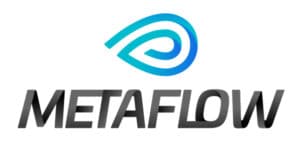
The framework, developed by Netflix and available as an open source project since 2019, simplifies various challenges around the scaling and versioning of ML projects. Metaflow stores code, data and dependencies in a content-addressed store, making it possible to evolve workflows, reproduce old ones and process new ones. By offloading individual steps to separate nodes on AWS, Metaflow makes it easier to scale the ML workflow without having to deal with communication between nodes. The framework is especially practical if you plan to manage and run your ML workflow in a production environment on AWS.
Place 9 H2O
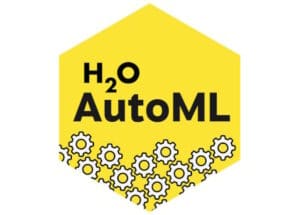
The ML platform H2O kills several birds with one stone: With various preconfigured algorithms such as GLM, XGBoost, Random Forest, DNN, GAM or K-means as well as simple extension options with Hadoop, Spark and other frameworks, the platform solves many difficulties of ML model development and deployment. The intuitive UI and AutoML functionalities automate feature engineering, model training and tuning for a faster workflow when creating new ML models. Because of its support for many popular programming languages and useful MLOps features, this platform is used by many large companies for use cases in the insurance, finance and healthcare sectors.
Place 8 Apache MXNet

The lean deep learning framework, developed by the Apache Software Foundation in partnership with Intel, is suitable for flexible prototyping as well as for use in the production environment. The framework was designed for the development of neural networks and convinces with a well-scalable infrastructure and a flexible model of neural networks in different programming languages. MXNet is ideally suited for parallelising deep learning computations on multiple CPUs or GPUs in the cloud - with almost linear scalability. The Gluon API as a frontend simplifies the use of the framework through many plug-and-play building blocks for the development of neural networks, including predefined layers, optimisers and initialisers.
Place 7 FastAI

Developing an ML model prototype is time-consuming. With fast.ai it is - as the name suggests - faster. The framework's high-level API offers preconfigured algorithms as well as a well thought-out structure and thus ensures the faster development of functioning deep learning model prototypes. However, this does not make the framework any less interesting for experts: with the low-level API, sophisticated and finely tuned ML models can be created and optimised down to the smallest detail. The goal of the framework and the non-profit organisation behind it is to "make neural networks uncool again". This is not to diminish the popularity of neural networks, but to expand the accessibility of the technology beyond the academic elite and experts.
Place 6 XGBoost

If you work with structured or tabular data, an algorithm based on decision trees should be on the shortlist. XGBoost offers the perfect combination of software and hardware optimisation to accelerate the Gradient Boosted Trees algorithm. With APIs in Python, Java, C++, Scala and Julia, the framework supports multiple implementations of Gradient Boosted Trees and runs on CPUs, GPUs and distributed computing resources. The framework has already been able to convince in many Kaggle competitions and offers shorter computation times than normal gradient boosting due to its speed. The combination of hardware optimisation, parallelisation and cloud integration makes the framework optimal for accelerating calculations based on decision trees.
Place 5 Apache Spark
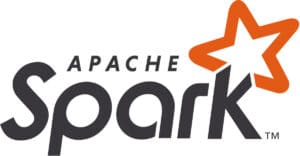
Spark offers you a complete solution for your ML workflow as one of the largest open source projects in history. The unified computing engine for large-scale data analytics projects is one of the most actively developed open source engines for machine learning and data processing. The Spark Engine supports all common programming languages and can be easily combined with various frameworks and libraries. With Spark MLLib, the engine provides various algorithms and workflow tools for experimenting, deploying and scaling your ML model with the fast Spark computing engine. From SQL to data streaming to machine learning, Spark runs anywhere from your laptop's CPU to a server cluster, making it the right framework to start small and scale up big.
Place 4 Scikit-Learn
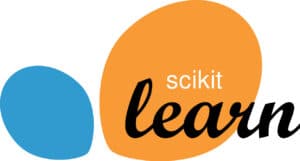
For beginners who want to get started in the world of ML with predictive data analysis, Scikit-Learn is just the thing. The robust and easy-to-understand framework offers a range of simple and efficient tools for data mining and data analytics. Because Scikit-Learn is based on various Python packages such as Numpy, SciPy and Matplotlib, the typical ML workflow is easy to navigate and learn. With its ease of use and many well-described examples, Sckikit-Learn is a great tool for beginners and new ML engineers who want to get results quickly with ML algorithms.
3rd place Keras

Developing neural networks can be more difficult than expected - especially for beginners. The Keras framework offers a remedy and simplifies the definition and training of any kind of neural network. Keras was originally developed for scientific purposes to reduce the time from idea to experimentation with neural networks. The framework includes unified and simple APIs, reduces the steps needed to develop neural networks for typical use cases, and provides user-friendly debugging. With the performance of TensorFlow and an API for fast experimentation, Keras is an established framework used by both scientists and many large companies.
2nd place PyTorch
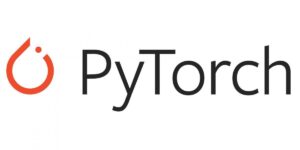
In your search for a flexible and well-scalable deep learning framework, you may have heard of PyTorch - with good reason! One of the main advantages of using PyTorch for Deep Learning is PyTorch's so-called 'dynamic computation graphs'. While static computation graphs, like in TensorFlow, are defined before runtime, dynamic computation graphs define themselves only when the model is computed. In other words, the graph is rebuilt at each iteration. This can be particularly helpful in defining recurrent neural networks (RNN), for example in NLP use cases with variable length inputs. Because PyTorch is designed for a low-level environment, the framework offers a high degree of flexibility and many possibilities - but can be somewhat overwhelming for beginners.
Place 1 TensorFlow
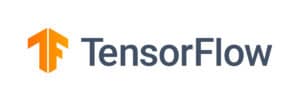
Of course, the most popular deep learning framework cannot be missing from this list. With APIs in Java, Python and JavaScript - but the core structure written in C++ - TensorFlow is fast yet easy to use. The framework can be used to train and deploy deep neural networks, whether on servers, the web or edge devices. With countless industry-leading ML use cases, TensorFlow is one of the most versatile and popular frameworks for developing neural networks. Moreover, the newly developed TensorFlow Extended even provides an end-to-end platform for developing and deploying complete ML pipelines.
Which framework do you prefer to work with when it comes to ML and Deep Learning?
Comment your favourites below this article!








0 Kommentare